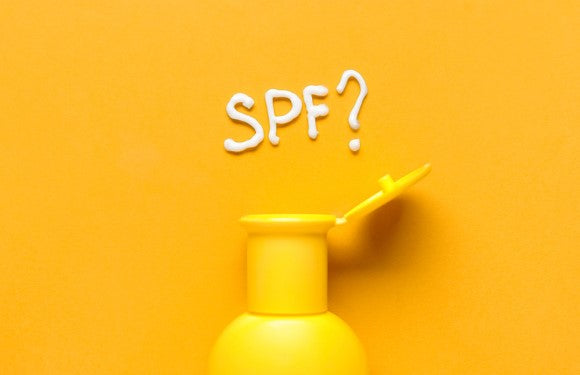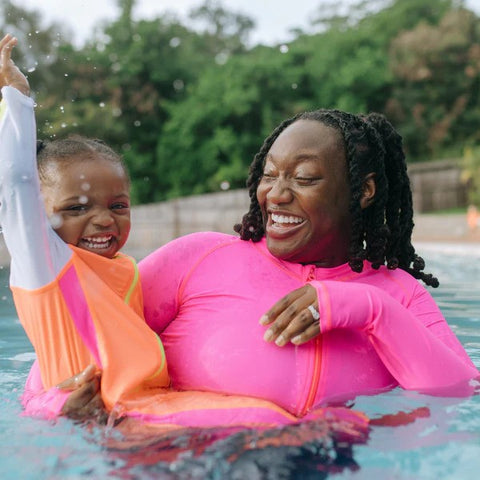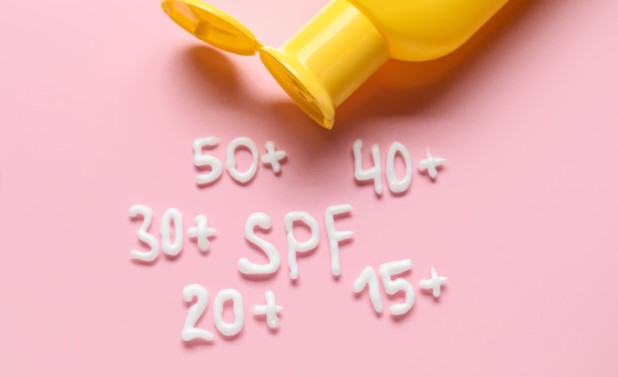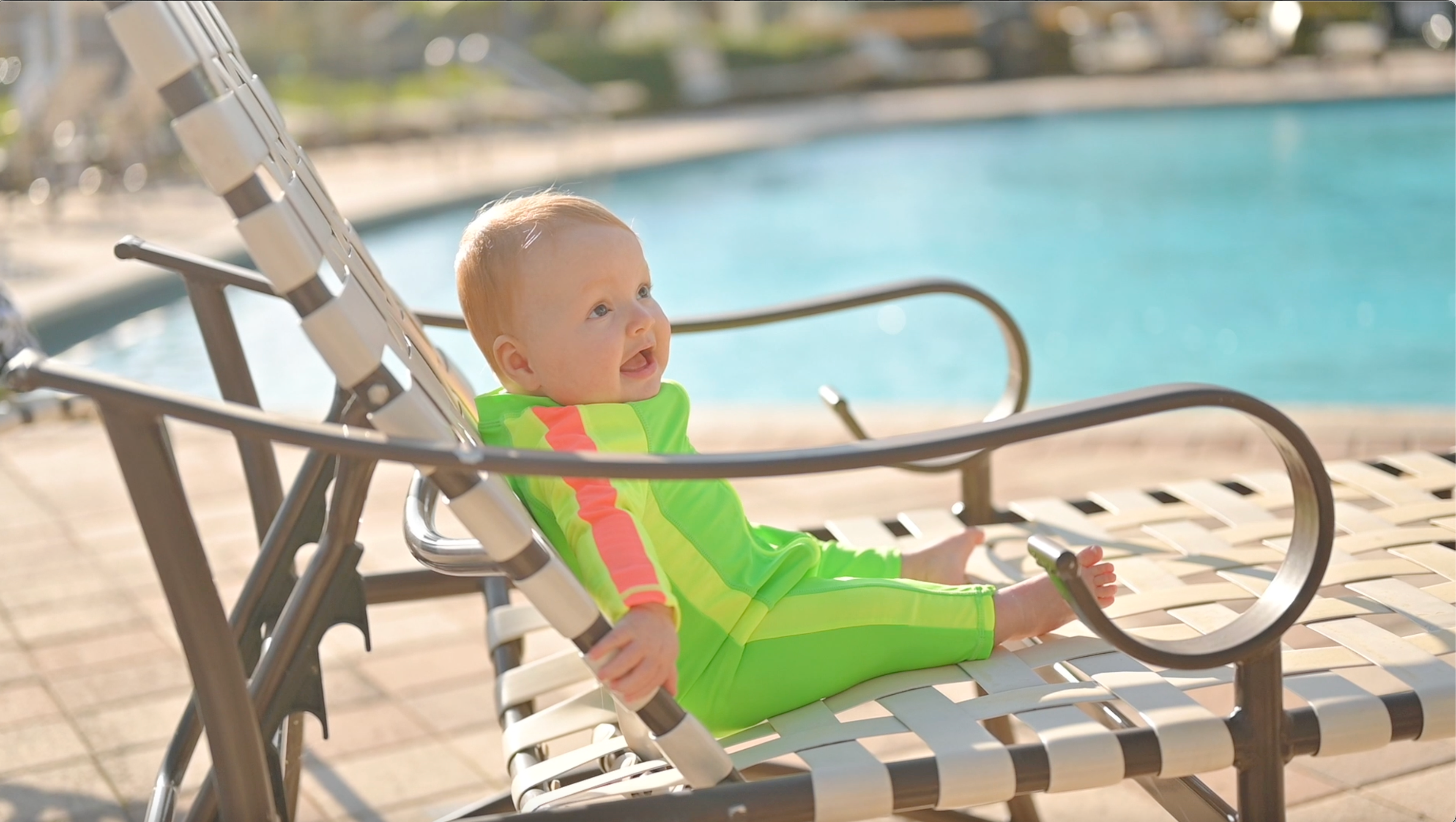
SPF 50 vs 70: which one to choose?
The main difference between SPF 50 and SPF 70 sunscreens is that they offer slightly different levels of protection against the sun's harmful ultraviolet (UV) rays. While SPF 50 offers 98% or 50 times the protection, SPF 70 offers 98.5 or 70 times the protection. Your skin tone, time spent outdoors, and sun sensitivity influence the right SPF choice.
Quick links:
We will highlight the differences between SPF 50 and 70, and teach you how to choose the right sun protection factor for your needs.
What is SPF?
Sun protection factor (SPF) is a measure of how well a sunscreen protects skin from UVB rays, the type of radiation that causes sunburn and sun poisoning, and can contribute to skin cancer. SPF is calculated by comparing the amount of time needed to burn sunscreen-treated skin to the amount of time needed to burn untreated skin.
If unprotected skin reddens after 20 minutes, an SPF 30 sunscreen theoretically prevents reddening for 30 times longer—around 10 hours. This calculation occurs in a lab under a set of controlled conditions. In reality, factors like sweat, oils, and water decrease a sunscreen's effectiveness. Regardless of SPF, sunscreen demands reapplication every two hours for optimal protection.
SPF only measures protection against UVB radiation. It doesn't indicate defense from UVA rays, another type of radiation that penetrates deeper into the skin and is associated with premature skin aging and the development of skin cancer. To protect yourself against both UV types, select a broad-spectrum sunscreen.
Benefits of SPF 50
Sunscreens with SPF 50 offer many benefits that make them a popular choice for everyday sun protection:
- Excellent UVB protection. SPF 50 sunscreen delivers effective UVB protection, blocking up to 98% of UVB rays. This protection level suits most daily activities and provides a solid barrier against sunburn and UVB-related skin damage.
- Broad availability. SPF 50 sunscreens come in different formulations such as sprays, creams, and gels. Different options allow people to select products aligning with their preferences and skin types.
- Ease of application. SPF 50 sunscreens often apply and blend into the skin with ease. They are lightweight and non-greasy and typically don't leave much of a visible residue on the skin. This straightforward application promotes seamless integration into daily sun protection routines.
Considerations with SPF 50
SPF 50 sunscreens provide excellent protection, but they may still require more frequent reapplication than higher SPF sunscreens, especially when spending extended periods of time in the sun. Also, some individuals might prefer a higher SPF for added peace of mind and an extra layer of protection against UV radiation.
Benefits of SPF 70
SPF 70 sunscreen has many advantages, especially for people who need more protection:
- Significant UVB defense. SPF 70 sunscreen blocks around 98.6% of UVB rays, providing substantial defense. This high level of protection benefits those with fair or sensitive skin that is prone to burning. Only a small amount of UVB radiation penetrates through to the skin, reducing sunburn risk.
- Added protection for extended sun exposure. SPF 70 offers better sun protection for those who spend a lot of time outdoors. It proves useful in harsh conditions with intense sun.
- Enhanced protection for certain activities. Specific pursuits like high-altitude climbing or beach days may expose skin to intense UV radiation. SPF 70 adds an enhanced protective barrier, helping guard against the elevated UV damage risk associated with these activities.
Considerations with SPF 70
SPF 70 sunscreen may feel heavier or may leave a white cast on the skin, which some people can find unappealing. Also, sunscreens with higher sun protection factors are usually more expensive than those with lower SPF.
Main differences between SPF 50 and SPF 70
Here are the main differences between SPF 50 and SPF 70 sunscreen products:
|
Feature |
SPF 50 |
SPF 70 |
|
UVB protection |
Blocks 98% of UVB rays |
Blocks 98.6% of UVB rays |
|
Suitable for |
Most daily activities |
Extended sun exposure, high UV conditions |
|
Application ease |
Often lightweight and non-greasy |
May feel heavier or leave a white cast |
|
Cost |
Generally less expensive |
Usually more expensive |
Other sun protection measures
Sunscreen is an essential sun protection measure. But, you can't fully control the impact and protection of your sunscreen. There are more ways to get effective protection from the sun that can be combined with sunscreen strategies:
- Seek shade. Make use of shade from trees, umbrellas, or canopies, especially during peak sun-hours when UV rays are most intense.
- Wear protective clothing. Opt for lightweight, long-sleeved shirts, pants, sun hats, and sunglasses to create an effective barrier against harmful UV exposure. Ultraviolet protection factor (UPF) 50+ clothing offers superior sun protection, blocking over 98% of the sun's damaging UV rays.
- Use broad-spectrum sunscreens. In addition to a high-SPF sunscreen, ensure you apply a broad-spectrum product that protects against both UVB and UVA rays for comprehensive UV protection.
- Reapply sunscreen regularly. No sunscreen is completely water-resistant or sweat-proof. Reapply sunscreen every 2 hours and after swimming/sweating for continued skin-safe sun protection.
- Avoid peak sun hours. Limit time in the sun between 10 am and 4 pm when the sun's UV rays are typically at their strongest.
SPF and different skin tones
While everyone, regardless of skin tone, should use sunscreen to protect against UV damage, the SPF level and application may vary based on skin color. People with darker skin have more melanin, which provides some natural protection against UV rays. This does not mean that individuals with darker skin are immune to sun damage.
The Skin Cancer Foundation recommends that people of all skin tones use broad-spectrum sunscreen with an SPF of at least 30. This level of protection helps guard against both UVA and UVB rays, which can cause premature skin aging, sunburn, and increase the risk of skin cancer.
When choosing between SPF 50 and SPF 70, those with darker skin may opt for the lower SPF, as the difference in protection is minimal. SPF 50 sunscreens block about 98% of UVB rays, while SPF 70 blocks approximately 98.6%. This slight difference may not be as important for those with darker skin tones who have a lower risk of sunburn than those with fair skin.
Higher SPFs may leave a more noticeable white cast on darker skin tones due to the increased concentration of active ingredients like zinc oxide and titanium dioxide. To avoid this issue, individuals with darker skin can look for tinted sunscreens or chemical sunscreens that are less likely to leave a white cast.
Choose SwimZip for your sun protection
SwimZip promotes sun-safe fun with stylish, functional, and affordable sun-protective swimwear. We are committed to developing and delivering high-quality UPF 50+ clothing that allows you and your loved ones to enjoy your time outdoors while staying protected from the sun's harmful rays.
We offer clothing and accessories for every member of the family, including swim trunks for men, swimwear for women, sunsuits for kids, wide-brimmed hats, and rash guards.
Our neon collection features fun, bright colors that will make sure you and your family stand out this summer. High-visibility swimwear is a great way to make sure you are safe and easy to spot while out on the water, while letting your personality shine.
Look at this pink long sleeve rash guard. Not only is this eye-catching and offers one of the safest choices for swimwear, not to mention it is also absolutely adorable. Pair it with a neon orange and white sunsuit for your girl, and you'll be the most stylish duo at the beach.
SPF 50 vs 70 FAQ
Is SPF 70 too much for daily use?
SPF 70 is not necessarily too much for daily use, but it may be more than most people need for everyday activities. The extra protection offered by SPF 70 compared to SPF 50 is minimal, blocking only about 0.6% more UVB rays.
For daily use, a broad-spectrum sunscreen with an SPF of at least 30 is generally sufficient, as recommended by the Skin Cancer Foundation. If you have very fair or sensitive skin, spend extended periods outdoors, or live in an area with intense UV radiation, using SPF 70 daily may provide added peace of mind.
Does higher SPF last longer?
Higher SPF sunscreens do not necessarily last longer than lower SPF products. The SPF value indicates the level of protection against UVB rays, not the duration of effectiveness. The key factors that determine how long a sunscreen lasts include the amount applied, skin type, and the intensity of UV exposure.
Is there a big difference between SPF 70 and 100?
The difference between SPF 70 and SPF 100 is relatively small and not as significant as the difference between lower SPF levels. SPF 70 blocks 98.6% of UVB rays, while SPF 100 blocks about 99% of UVB rays. SPF 100 offers only slightly more protection than SPF 70, and the difference in real-world effectiveness is negligible for most people. No sunscreen provides 100% protection.
Both SPF 70 and SPF 100 provide excellent protection against sunburns and long-term sun damage.
Why should you wait 15 minutes after applying sunscreen?
You should wait 15 minutes after applying sunscreen before going out in the sun for a few important reasons:
- Absorption. Sunscreen needs time to be fully absorbed into the skin and form a protective barrier. A 15-minute wait allows the active ingredients to penetrate the skin and become effective.
- Activation. Many sunscreens contain chemical filters that need time to react with the skin and become activated. The 15-minute wait allows these filters to fully activate and provide the advertised level of protection.
- Uniform coverage. Waiting 15 minutes helps ensure the sunscreen is evenly distributed and covers the entire surface area of the skin, rather than being rubbed off or unevenly applied.
Do you tan more with SPF 30 or 50?
You will generally tan more with a lower SPF sunscreen than a higher SPF. This is because SPF 30 blocks about 97% of UVB rays, while SPF 50 blocks 98% of UVB rays. The higher the SPF, the more of the sun's rays are blocked, which means less tanning can occur.
For those interested in tanning, we recommend reading our blog post that discusses the optimal UV index for achieving a sun-kissed glow while minimizing the risks associated with sun exposure.
Is a higher SPF always better?
A higher SPF is not always better. While SPF 100 sunscreens do provide slightly more protection than SPF 30 or 50 products, the difference in real-world effectiveness is relatively small. SPF 30 blocks 97% of UVB rays, while SPF 50 blocks 98%, and SPF 100 blocks 99%. The key is to apply sunscreen liberally and reapply it every 2 hours, regardless of the SPF level.
What is the three-finger rule of sunscreen?
The three-finger rule of sunscreen application is a simple guideline to help ensure you're using enough product to get the full protective benefits. Here's how it works:
- Squeeze out a line of sunscreen from the tip of your index finger to the tip of your middle finger. This should be about the length of three fingers.
- Apply this amount to your face, neck, and ears. This is the recommended amount for these areas.
- Repeat the three-finger application to each arm, leg, and other exposed areas of your body.
The three-finger rule helps you apply about 1 to 2 milligrams of sunscreen per square centimeter of skin, which is the amount needed to achieve the stated SPF. Too little sunscreen can significantly reduce its effectiveness, so the three-finger guideline is a helpful way to ensure you're using enough product for proper sun protection.
Are water-resistance sunscreens good for surfing?
Water-resistant sunscreens are an excellent choice for surfing and other water-based activities. These types of sunscreens are formulated to maintain their protective properties even when exposed to water, sweat, or other sources of moisture.
Is skin with sunscreen fully protected from sun damage?
While sunscreen is an essential protective measure, it does not make skin invincible against sun damage. Proper sunscreen application, reapplication, and combining it with other protective measures like protective clothing and shade is recommended for comprehensive defense.
What is the skin cancer risk from UV exposure?
Excessive UV radiation exposure is a major risk factor for developing skin cancer, including melanoma (the most serious form). Using sunscreen and taking protective measures can reduce your risk of skin cancer caused by UV damage.
What kinds of UV radiation are harmful to our skin?
Both UVA and UVB radiation from sunlight can be harmful to the skin. UVB causes burning, while UVA contributes to skin aging and potentially cancer development by penetrating the deeper skin layers.
Further reading
Resources
Sarnoff, D. S., & Kleiman, J. (2021, June). Sun Protection. The Skin Cancer Foundation. https://www.skincancer.org/skin-cancer-prevention/sun-protection/




Leave a comment
This site is protected by hCaptcha and the hCaptcha Privacy Policy and Terms of Service apply.